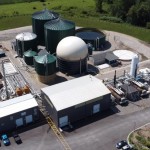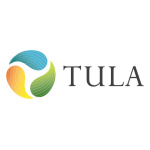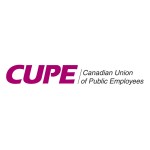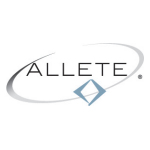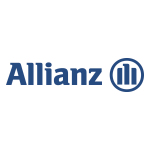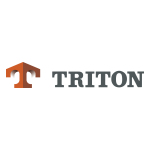-
GAAP 2021 first quarter EPS was $0.67 compared with $0.56 in 2020.
-
Xcel Energy reaffirms 2021 EPS earnings guidance of $2.90 to $3.00.
MINNEAPOLIS--(BUSINESS WIRE)--Xcel Energy Inc. (NASDAQ: XEL) today reported 2021 first quarter GAAP and ongoing earnings of $362 million, or $0.67 per share, compared with $295 million, or $0.56 per share in the same period in 2020.
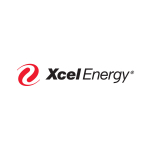
Earnings reflect higher electric and natural gas margins, which more than offset additional depreciation, interest charges and less allowance for funds used during construction (AFUDC).
“Xcel Energy had a strong first quarter and we are reaffirming our expectation to deliver earnings within our annual guidance range,” said Ben Fowke, chairman and CEO. “We are also pleased to have achieved a significant milestone, reducing carbon emission 51% from 2005 levels, bringing us more than halfway to our vision of delivering 100% carbon-free electricity to our customers by 2050.”
“We recently proposed significant measures in Colorado that will transform the energy landscape and help the state continue its clean energy leadership. Our Colorado Clean Energy Plan adds more than 5,000 megawatts of renewable energy and accelerates the retirement of our coal plants. The plan will reduce carbon emissions 85% in Colorado and increase renewable energy to nearly 80% by 2030. To support this ambitious plan, we also proposed a significant transmission expansion that would add 560 miles of new lines to deliver renewable energy.”
At 9:00 a.m. CDT today, Xcel Energy will host a conference call to review financial results. To participate in the call, please dial in 5 to 10 minutes prior to the start and follow the operator’s instructions.
US Dial-In:
|
|
(888) 394-8218
|
International Dial-In:
|
|
(400) 120-9101
|
Conference ID:
|
|
7731118
|
The conference call also will be simultaneously broadcast and archived on Xcel Energy’s website at www.xcelenergy.com. To access the presentation, click on Investor Relations. If you are unable to participate in the live event, the call will be available for replay from 12:00 p.m. CDT on April 29 through 12:00 p.m. CDT on May 2.
Replay Numbers
|
|
|
US Dial-In:
|
|
(888) 203-1112
|
International Dial-In:
|
|
(719) 457-0820
|
Access Code:
|
|
7731118
|
Except for the historical statements contained in this report, the matters discussed herein are forward-looking statements that are subject to certain risks, uncertainties and assumptions. Such forward-looking statements, including the 2021 EPS guidance, long-term EPS and dividend growth rate objectives, future sales, future expenses, future tax rates, future operating performance, estimated base capital expenditures and financing plans, projected capital additions and forecasted annual revenue requirements with respect to rider filings, expected rate increases to customers, expectations and intentions regarding regulatory proceedings, and expected impact on our results of operations, financial condition and cash flows of resettlement calculations and credit losses relating to certain energy transactions, as well as assumptions and other statements are intended to be identified in this document by the words “anticipate,” “believe,” “could,” “estimate,” “expect,” “intend,” “may,” “objective,” “outlook,” “plan,” “project,” “possible,” “potential,” “should,” “will,” “would” and similar expressions. Actual results may vary materially. Forward-looking statements speak only as of the date they are made, and we expressly disclaim any obligation to update any forward-looking information. The following factors, in addition to those discussed in Xcel Energy’s Annual Report on Form 10-K for the fiscal year ended Dec. 31, 2020 and subsequent filings with the Securities and Exchange Commission, could cause actual results to differ materially from management expectations as suggested by such forward-looking information: uncertainty around the impacts and duration of the COVID-19 pandemic; operational safety, including our nuclear generation facilities; successful long-term operational planning; commodity risks associated with energy markets and production; rising energy prices and fuel costs; qualified employee work force and third-party contractor factors; ability to recover costs, changes in regulation and subsidiaries’ ability to recover costs from customers; reductions in our credit ratings and the cost of maintaining certain contractual relationships; general economic conditions, including inflation rates, monetary fluctuations and their impact on capital expenditures and the ability of Xcel Energy Inc. and its subsidiaries to obtain financing on favorable terms; availability or cost of capital; our customers’ and counterparties’ ability to pay their debts to us; assumptions and costs relating to funding our employee benefit plans and health care benefits; our subsidiaries’ ability to make dividend payments; tax laws; effects of geopolitical events, including war and acts of terrorism; cyber security threats and data security breaches; seasonal weather patterns; changes in environmental laws and regulations; climate change and other weather; natural disaster and resource depletion, including compliance with any accompanying legislative and regulatory changes; and costs of potential regulatory penalties.
This information is not given in connection with any
sale, offer for sale or offer to buy any security.
XCEL ENERGY INC. AND SUBSIDIARIES
|
CONSOLIDATED STATEMENTS OF INCOME (UNAUDITED)
|
(amounts in millions, except per share data)
|
|
|
|
|
|
|
|
Three Months Ended March 31
|
|
|
2021
|
|
2020
|
Operating revenues
|
|
|
|
|
|
|
Electric
|
|
$
|
2,870
|
|
|
$
|
2,203
|
|
Natural gas
|
|
647
|
|
|
583
|
|
Other
|
|
24
|
|
|
25
|
|
Total operating revenues
|
|
3,541
|
|
|
2,811
|
|
|
|
|
|
|
|
|
Operating expenses
|
|
|
|
|
|
|
Electric fuel and purchased power
|
|
1,386
|
|
|
797
|
|
Cost of natural gas sold and transported
|
|
299
|
|
|
285
|
|
Cost of sales — other
|
|
8
|
|
|
9
|
|
Operating and maintenance expenses
|
|
584
|
|
|
579
|
|
Conservation and demand side management expenses
|
|
73
|
|
|
74
|
|
Depreciation and amortization
|
|
521
|
|
|
463
|
|
Taxes (other than income taxes)
|
|
163
|
|
|
149
|
|
Total operating expenses
|
|
3,034
|
|
|
2,356
|
|
|
|
|
|
|
|
|
Operating income
|
|
507
|
|
|
455
|
|
|
|
|
|
|
|
|
Other income (expense), net
|
|
5
|
|
|
(11
|
)
|
Equity earnings of unconsolidated subsidiaries
|
|
14
|
|
|
11
|
|
Allowance for funds used during construction — equity
|
|
14
|
|
|
23
|
|
|
|
|
|
|
|
|
Interest charges and financing costs
|
|
|
|
|
|
|
Interest charges — includes other financing costs of $7 and $7, respectively
|
|
205
|
|
|
199
|
|
Allowance for funds used during construction — debt
|
|
(5
|
)
|
|
(10
|
)
|
Total interest charges and financing costs
|
|
200
|
|
|
189
|
|
|
|
|
|
|
|
|
Income before income taxes
|
|
340
|
|
|
289
|
|
Income tax benefit
|
|
(22
|
)
|
|
(6
|
)
|
Net income
|
|
$
|
362
|
|
|
$
|
295
|
|
|
|
|
|
|
|
|
Weighted average common shares outstanding:
|
|
|
|
|
|
|
Basic
|
|
538
|
|
|
526
|
|
Diluted
|
|
539
|
|
|
527
|
|
|
|
|
|
|
|
|
Earnings per average common share:
|
|
|
|
|
|
|
Basic
|
|
$
|
0.67
|
|
|
$
|
0.56
|
|
Diluted
|
|
0.67
|
|
|
0.56
|
|
XCEL ENERGY INC. AND SUBSIDIARIES
Notes to Investor Relations Earnings Release (Unaudited)
Due to the seasonality of Xcel Energy’s operating results, quarterly financial results are not an appropriate base from which to project annual results.
Non-GAAP Financial Measures
The following discussion includes financial information prepared in accordance with generally accepted accounting principles (GAAP), as well as certain non-GAAP financial measures such as ongoing return on equity (ROE), electric margin, natural gas margin, ongoing earnings and ongoing diluted EPS. Generally, a non-GAAP financial measure is a measure of a company’s financial performance, financial position or cash flows that excludes (or includes) amounts that are adjusted from measures calculated and presented in accordance with GAAP. Xcel Energy’s management uses non-GAAP measures for financial planning and analysis, for reporting of results to the Board of Directors, in determining performance-based compensation and communicating its earnings outlook to analysts and investors. Non-GAAP financial measures are intended to supplement investors’ understanding of our performance and should not be considered alternatives for financial measures presented in accordance with GAAP. These measures are discussed in more detail below and may not be comparable to other companies’ similarly titled non-GAAP financial measures.
Ongoing ROE
Ongoing ROE is calculated by dividing the net income or loss of Xcel Energy or each subsidiary, adjusted for certain nonrecurring items, by each entity’s average stockholder’s equity. We use these non-GAAP financial measures to evaluate and provide details of earnings results.
Electric and Natural Gas Margins
Electric margin is presented as electric revenues less electric fuel and purchased power expenses. Natural gas margin is presented as natural gas revenues less the cost of natural gas sold and transported. Expenses incurred for electric fuel and purchased power and the cost of natural gas are generally recovered through various regulatory recovery mechanisms. As a result, changes in these expenses are generally offset in operating revenues. Management believes electric and natural gas margins provide the most meaningful basis for evaluating our operations because they exclude the revenue impact of fluctuations in these expenses. These margins can be reconciled to operating income, a GAAP measure, by including other operating revenues, cost of sales - other, operating and maintenance (O&M) expenses, conservation and demand side management (DSM) expenses, depreciation and amortization and taxes (other than income taxes).
Earnings Adjusted for Certain Items (Ongoing Earnings and Ongoing Diluted EPS)
GAAP diluted EPS reflects the potential dilution that could occur if securities or other agreements to issue common stock (i.e., common stock equivalents) were settled. The weighted average number of potentially dilutive shares outstanding used to calculate Xcel Energy Inc.’s diluted EPS is calculated using the treasury stock method. Ongoing earnings reflect adjustments to GAAP earnings (net income) for certain items. Ongoing diluted EPS is calculated by dividing the net income or loss of each subsidiary, adjusted for certain items, by the weighted average fully diluted Xcel Energy Inc. common shares outstanding for the period. Ongoing diluted EPS for each subsidiary is calculated by dividing the net income or loss of such subsidiary, adjusted for certain items, by the weighted average fully diluted Xcel Energy Inc. common shares outstanding for the period.
We use these non-GAAP financial measures to evaluate and provide details of Xcel Energy’s core earnings and underlying performance. We believe these measurements are useful to investors to evaluate the actual and projected financial performance and contribution of our subsidiaries. For the three months ended March 31, 2021 and 2020, there were no such adjustments to GAAP earnings and therefore GAAP earnings equal ongoing earnings for these periods.
Note 1. Earnings Per Share Summary
Xcel Energy’s 2021 first quarter earnings were $0.67 per share compared to $0.56 per share in 2020, primarily reflecting higher electric and natural gas margins (driven by capital investment recovery and regulatory outcomes), which more than offset additional depreciation, interest charges, less AFUDC and declining sales primarily due to the impacts of COVID-19. First quarter earnings also reflect margin from proprietary commodity trading transactions, primarily entered into under Xcel Energy’s ordinary practices prior to the weather event. See Note 5 for further discussion.
Summarized diluted EPS for Xcel Energy:
|
|
Three Months Ended March 31
|
Diluted Earnings (Loss) Per Share
|
|
2021
|
|
2020
|
PSCo
|
|
$
|
0.31
|
|
|
$
|
0.24
|
|
NSP-Minnesota
|
|
0.24
|
|
|
0.20
|
|
SPS
|
|
0.11
|
|
|
0.08
|
|
NSP-Wisconsin
|
|
0.06
|
|
|
0.06
|
|
Equity earnings of unconsolidated subsidiaries
|
|
0.01
|
|
|
0.01
|
|
Regulated utility (a)
|
|
0.73
|
|
|
0.60
|
|
Xcel Energy Inc. and Other
|
|
(0.06
|
)
|
|
(0.04
|
)
|
Total (a)
|
|
$
|
0.67
|
|
|
$
|
0.56
|
|
(a) Amounts may not add due to rounding.
PSCo — Earnings increased $0.07 per share for the first quarter of 2021, reflecting higher natural gas and electric margins (primarily capital investment recovery and regulatory outcomes), partially offset by additional depreciation and taxes (other than income taxes).
NSP-Minnesota — Earnings increased $0.04 per share for the first quarter of 2021, reflecting higher electric margin (primarily capital investment recovery), partially offset by increased depreciation.
SPS — Earnings increased $0.03 per share for the first quarter of 2021, reflecting higher electric margin (regulatory outcomes in Texas and New Mexico), partially offset by increased depreciation.
NSP-Wisconsin — Earnings were flat for the first quarter of 2021.
Xcel Energy Inc. and Other — Primarily includes financing costs at the holding company.
Components significantly contributing to changes in 2021 EPS compared to 2020:
Diluted Earnings (Loss) Per Share
|
|
Three Months
Ended March 31
|
GAAP and ongoing diluted EPS - 2020
|
|
$
|
0.56
|
|
|
|
|
Components of change - 2021 vs. 2020
|
|
|
Higher electric margin
|
|
0.11
|
|
Higher natural gas margins
|
|
0.07
|
|
Lower ETR (a)
|
|
0.06
|
|
Higher other income (expense), net
|
|
0.02
|
|
Higher depreciation and amortization
|
|
(0.08
|
)
|
Lower AFUDC
|
|
(0.02
|
)
|
Higher interest charges
|
|
(0.01
|
)
|
Higher O&M
|
|
(0.01
|
)
|
Other, net
|
|
(0.03
|
)
|
GAAP and ongoing diluted EPS - 2021
|
|
$
|
0.67
|
|
(a) Includes production tax credits (PTCs) and plant regulatory amounts, which are primarily offset in electric margin.
Note 2. Regulated Utility Results
Estimated Impact of Temperature Changes on Regulated Earnings — Unusually hot summers or cold winters increase electric and natural gas sales, while mild weather reduces electric and natural gas sales. The estimated impact of weather on earnings is based on the number of customers, temperature variances, the amount of natural gas or electricity historically used per degree of temperature and excludes any incremental related operating expenses that could result due to storm activity or vegetation management requirements. As a result, weather deviations from normal levels can affect Xcel Energy’s financial performance.
Degree-day or Temperature-Humidity Index (THI) data is used to estimate amounts of energy required to maintain comfortable indoor temperature levels based on each day’s average temperature and humidity. Heating degree-days (HDD) is the measure of the variation in the weather based on the extent to which the average daily temperature falls below 65° Fahrenheit. Cooling degree-days (CDD) is the measure of the variation in the weather based on the extent to which the average daily temperature rises above 65° Fahrenheit. Each degree of temperature above 65° Fahrenheit is counted as one CDD, and each degree of temperature below 65° Fahrenheit is counted as one HDD. In Xcel Energy’s more humid service territories, a THI is used in place of CDD, which adds a humidity factor to CDD. HDD, CDD and THI are most likely to impact the usage of Xcel Energy’s residential and commercial customers. Industrial customers are less sensitive to weather. Typically, sales are not impacted in the first or fourth quarter due to THI or CDD.
Normal weather conditions are defined as either the 10, 20 or 30-year average of actual historical weather conditions. The historical period of time used in the calculation of normal weather differs by jurisdiction, based on regulatory practice. To calculate the impact of weather on demand, a demand factor is applied to the weather impact on sales. Extreme weather variations, windchill and cloud cover may not be reflected in weather-normalized estimates.
Percentage increase (decrease) in normal and actual HDD:
|
Three Months Ended March 31
|
|
2021 vs.
Normal
|
|
2020 vs.
Normal
|
|
2021 vs. 2020
|
HDD
|
1.3
|
%
|
|
(5.5)
|
%
|
|
6.5
|
%
|
|
|
|
|
|
|
|
|
|
Weather — Estimated impact of temperature variations on EPS compared with normal weather conditions:
|
Three Months Ended March 31
|
|
2021 vs.
Normal
|
|
2020 vs.
Normal
|
|
2021 vs. 2020
|
Retail electric
|
$
|
—
|
|
|
$
|
(0.011
|
)
|
|
$
|
0.011
|
|
Decoupling and sales true-up
|
0.002
|
|
|
0.006
|
|
|
(0.004
|
)
|
Electric total
|
$
|
0.002
|
|
|
$
|
(0.005
|
)
|
|
$
|
0.007
|
|
Firm natural gas
|
0.003
|
|
|
(0.007
|
)
|
|
0.010
|
|
Total
|
$
|
0.005
|
|
|
$
|
(0.012
|
)
|
|
$
|
0.017
|
|
Sales — Sales growth (decline) for actual and weather-normalized sales in 2021 compared to 2020:
|
|
Three Months Ended March 31
|
|
|
PSCo
|
|
NSP-Minnesota
|
|
SPS
|
|
NSP-Wisconsin
|
|
Xcel Energy
|
Actual (a)
|
|
|
|
|
|
|
|
|
|
|
|
Electric residential
|
|
6.3
|
%
|
|
5.1
|
%
|
|
8.8
|
%
|
|
4.7
|
%
|
|
6.0
|
%
|
Electric C&I
|
|
(4.8
|
)
|
|
(6.6
|
)
|
|
(7.1
|
)
|
|
(1.8
|
)
|
|
(5.8
|
)
|
Total retail electric sales
|
|
(1.0
|
)
|
|
(2.9
|
)
|
|
(4.3
|
)
|
|
0.2
|
|
|
(2.4
|
)
|
Firm natural gas sales
|
|
4.7
|
|
|
0.5
|
|
|
N/A
|
|
|
0.8
|
|
|
3.1
|
|
|
|
Three Months Ended March 31
|
|
|
PSCo
|
|
NSP-Minnesota
|
|
SPS
|
|
NSP-Wisconsin
|
|
Xcel Energy
|
Weather-Normalized (a)
|
|
|
|
|
|
|
|
|
|
|
Electric residential
|
|
4.9
|
%
|
|
4.5
|
%
|
|
3.8
|
%
|
|
2.9
|
%
|
|
4.4
|
%
|
Electric C&I
|
|
(5.1
|
)
|
|
(6.7
|
)
|
|
(7.3
|
)
|
|
(1.9
|
)
|
|
(6.0
|
)
|
Total retail electric sales
|
|
(1.7
|
)
|
|
(3.1
|
)
|
|
(5.4
|
)
|
|
(0.4
|
)
|
|
(3.0
|
)
|
Firm natural gas sales
|
|
(0.9
|
)
|
|
(1.3
|
)
|
|
N/A
|
|
|
(2.7
|
)
|
|
(1.2
|
)
|
|
|
Three Months Ended March 31 (2020 Leap Year Adjusted)
|
|
|
PSCo
|
|
NSP-Minnesota
|
|
SPS
|
|
NSP-Wisconsin
|
|
Xcel Energy
|
Weather-Normalized (a)
|
|
|
|
|
|
|
|
|
|
|
Electric residential
|
|
6.1
|
%
|
|
5.7
|
%
|
|
5.0
|
%
|
|
4.0
|
%
|
|
5.6
|
%
|
Electric C&I
|
|
(4.1
|
)
|
|
(5.6
|
)
|
|
(6.3
|
)
|
|
(0.8
|
)
|
|
(5.0
|
)
|
Total retail electric sales
|
|
(0.6
|
)
|
|
(2.0
|
)
|
|
(4.3
|
)
|
|
0.7
|
|
|
(1.9
|
)
|
Firm natural gas sales
|
|
0.2
|
|
|
(0.2
|
)
|
|
N/A
|
|
|
(1.5
|
)
|
|
—
|
|
(a) Higher residential sales and lower commercial and industrial (C&I) sales were primarily attributable to COVID-19.
Weather-normalized and leap-year adjusted electric sales growth (decline) — year-to-date (excluding leap day)
Each of our utility subsidiaries experienced higher residential sales and lower C&I sales as a result of COVID-19 beginning in March 2020. In addition, the following items impacted sales:
-
PSCo — Residential sales rose based on an increased number of customers and higher use per customer. The decline in C&I sales was primarily due to decreases in the manufacturing and service industries, partially offset by an increase in the energy sector.
-
NSP-Minnesota — Residential sales growth reflects higher use per customer and increased customer additions. The decline in C&I sales was primarily due to decreases within the manufacturing and service sectors.
-
SPS — Residential sales increased due to customer growth and higher use per customer. The decline in C&I sales was driven by decreases within the energy and manufacturing sectors.
-
NSP-Wisconsin — Residential sales growth was attributable to customer additions and higher use per customer. The decline in C&I sales was largely related to decreases in the energy and manufacturing industries, partially offset by an increase in the service sector.
Weather-normalized and leap-year adjusted natural gas sales growth (decline) — year-to-date (excluding leap day)
-
Natural gas sales primarily reflect lower customer use, offset by an increase in the number of customers.
Electric Margin — Electric revenues and fuel and purchased power expenses are impacted by fluctuations in the price of natural gas, coal and uranium. However, these price fluctuations have minimal impact on electric margin due to fuel recovery mechanisms that recover fuel expenses. In addition, electric customers receive a credit for PTCs generated, which reduced electric revenue and margin. See Note 5 for discussion on the impact of Winter Storm Uri.
Electric revenues and margin:
|
|
Three Months Ended March 31
|
(Millions of Dollars)
|
|
2021
|
|
2020
|
Electric revenues
|
|
$
|
2,870
|
|
|
$
|
2,203
|
|
Electric fuel and purchased power
|
|
(1,386
|
)
|
|
(797
|
)
|
Electric margin
|
|
$
|
1,484
|
|
|
$
|
1,406
|
|
Changes in electric margin:
(Millions of Dollars)
|
|
Three Months
Ended March 31,
2021 vs. 2020
|
Non-fuel riders
|
|
$
|
44
|
|
Regulatory rate outcomes (Colorado, Texas, New Mexico, Wisconsin and North Dakota)
|
|
44
|
|
Proprietary commodity trading, net of sharing (see Note 5)
|
|
27
|
|
Wholesale transmission revenue (net)
|
|
11
|
|
Estimated impact of weather (net of decoupling/sales true-up)
|
|
5
|
|
PTCs flowed back to customers (offset by lower ETR)
|
|
(37
|
)
|
Sales and demand (a)
|
|
(14
|
)
|
Other (net)
|
|
(2
|
)
|
Total increase in electric margin
|
|
$
|
78
|
|
(a) Sales excludes weather impact, net of decoupling/sales true-up, and demand is net of sales true-up.
Natural Gas Margin — Natural gas expense varies with changing sales and the cost of natural gas. However, fluctuations in the cost of natural gas has minimal impact on natural gas margin due to cost recovery mechanisms. See Note 5 for discussion on the impact of Winter Storm Uri.
Natural gas revenues and margin:
|
|
Three Months Ended March 31
|
(Millions of Dollars)
|
|
2021
|
|
2020
|
Natural gas revenues
|
|
$
|
647
|
|
|
$
|
583
|
|
Cost of natural gas sold and transported
|
|
(299
|
)
|
|
(285
|
)
|
Natural gas margin
|
|
$
|
348
|
|
|
$
|
298
|
|
Changes in natural gas margin:
(Millions of Dollars)
|
|
Three Months
Ended March 31,
2021 vs. 2020
|
Regulatory rate outcomes (Colorado)
|
|
$
|
40
|
|
Estimated impact of weather
|
|
7
|
|
Other (net)
|
|
3
|
|
Total increase in natural gas margin
|
|
$
|
50
|
|
O&M Expenses — O&M expenses increased $5 million, or 0.9%, for the first quarter of 2021. The increase was primarily due to expenses associated with new wind farms, software and infrastructure costs, compensation, damage prevention and storms, partially offset by continuous improvement initiatives.
Depreciation and Amortization — Depreciation and amortization increased $58 million, or 12.5%, for the first quarter of 2021. The increase was primarily driven by several wind farms going into service, as well as normal system expansion. In addition, 2021 depreciation expense increased as a result of implementation of new depreciation rates in Colorado, New Mexico and Texas.
Other Income (Expense) — Other income (expense) increased $16 million for the first quarter of 2021, largely related to rabbi trust performance primarily offset in O&M expenses (compensation).
AFUDC, Equity and Debt — AFUDC decreased $14 million for the first quarter of 2021. Decrease was driven by various wind projects placed into service.
Interest Charges — Interest charges increased $6 million, or 3.0%, for the first quarter of 2021. The increase was largely attributable to higher debt levels to fund capital investments, partially offset by lower long-term and short-term interest rates.
Income Taxes — Effective income tax rate:
|
|
Three Months Ended March 31
|
|
|
2021
|
|
2020
|
|
2021 vs 2020
|
Federal statutory rate
|
|
21.0
|
%
|
|
21.0
|
%
|
|
—
|
%
|
State tax (net of federal tax effect)
|
|
4.9
|
|
|
4.9
|
|
|
—
|
|
(Decreases) increases:
|
|
|
|
|
|
|
Wind PTCs
|
|
(24.6
|
)
|
|
(17.2
|
)
|
|
(7.4
|
)
|
Plant regulatory differences (a)
|
|
(6.1
|
)
|
|
(8.4
|
)
|
|
2.3
|
|
Other (net)
|
|
(1.7
|
)
|
|
(2.4
|
)
|
|
0.7
|
|
Effective income tax rate
|
|
(6.5
|
)%
|
|
(2.1
|
)%
|
|
(4.4
|
)%
|
(a) Regulatory differences for income tax primarily relate to the credit of excess deferred taxes to customers. Income tax benefits associated with the credit of excess deferred credits are generally offset by corresponding revenue reductions.
Income tax benefit increased $16 million for the first quarter of 2021. The increase was primarily driven by an increase in wind PTCs due to additional wind facilities going into service. Wind PTCs are credited to customers (recorded as a reduction to revenue) and do not have a material impact on net income. Impact of wind PTCs was partially offset by higher pretax earnings in 2021.
Note 3. Capital Structure, Liquidity, Financing and Credit Ratings
Xcel Energy’s capital structure:
(Millions of Dollars)
|
|
March 31, 2021
|
|
Percentage of Total
Capitalization
|
|
Dec. 31, 2020
|
|
Percentage of Total
Capitalization
|
Current portion of long-term debt
|
|
$
|
21
|
|
|
—
|
%
|
|
$
|
421
|
|
|
1
|
%
|
Short-term debt
|
|
1,477
|
|
|
4
|
|
|
584
|
|
|
2
|
|
Long-term debt
|
|
21,470
|
|
|
57
|
|
|
19,645
|
|
|
56
|
|
Total debt
|
|
22,968
|
|
|
61
|
|
|
20,650
|
|
|
59
|
|
Common equity
|
|
14,700
|
|
|
39
|
|
|
14,575
|
|
|
41
|
|
Total capitalization
|
|
$
|
37,668
|
|
|
100
|
%
|
|
$
|
35,225
|
|
|
100
|
%
|
Contacts
Paul Johnson, Vice President, Investor Relations, (612) 215-4535
For news media inquiries only, please call Xcel Energy Media Relations, (612) 215-5300
Xcel Energy website address: www.xcelenergy.com
Read full story here 


